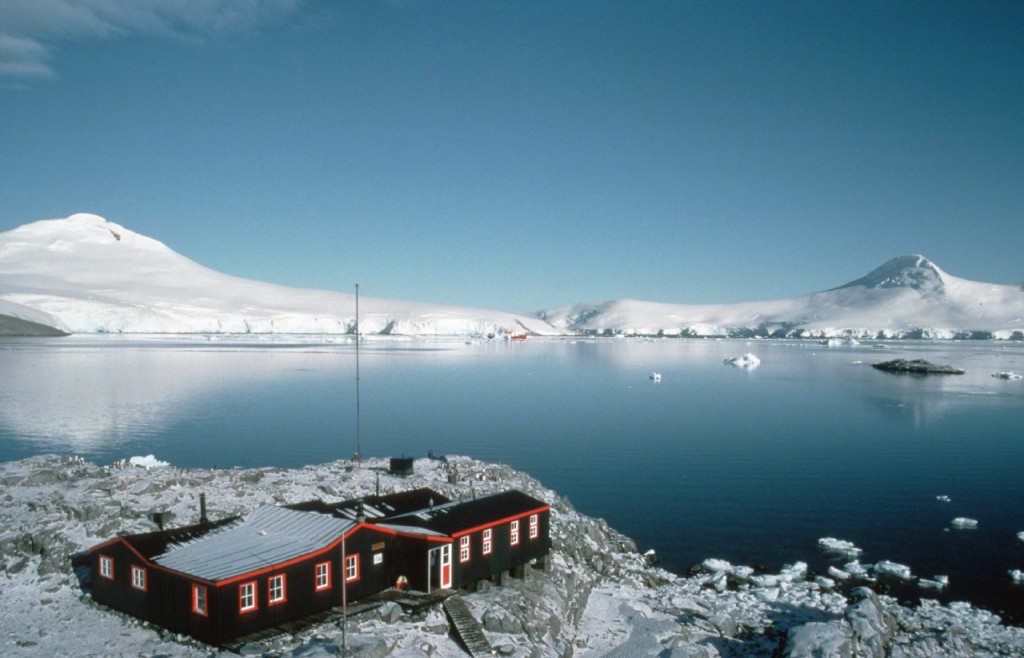The British Antarctic Survey (BAS) is the UK’s national Antarctic operator, and has for the past 60 years been responsible for most of the UK’s scientific research in Antarctica. BAS has its roots in Operation Tabarin, a secret World War II mission. Designed to deny Antarctic waters to enemy ships, Tabarin also had a scientific role, collecting data on Antarctic biology, geology and weather during the last two years of the war.
After the end of the war in 1945, Tabarin’s three bases and its scientific work were transferred to a new organisation – the Falklands Islands Dependencies Survey, which in turn was renamed in 1962 as the British Antarctic Survey. In 1967 the UK Government transferred the responsibility for BAS from the Colonial Office to NERC (Natural Environment Research Council).
Port Lockroy, established in 1944 is the only surviving base from Operation Tabarin. After restoration in 1995-96, a four man team spent nine weeks in the field restoring the old base. Port Lockroy is one of the most visited tourist sites in Antarctica.
International science
There were many historic surveying and scientific expeditions that paved the way for modern polar science in the UK, from Captain Cook’s naval voyages of the 18th century to the famous expeditions led by Scott and Shackleton. Many records from the ‘heroic age’ are held by the Scott Polar Research Institute. The International Geophysical Year saw the setting up of one of the world’s most unusual research stations. Originally constructed as a traditional wooden hut with pitched roof, the British base at Halley Bay (named after the famous astronomer Edmund Halley) was established by the Royal Society on the 150m thick, continually moving, Brunt Ice Shelf. The base filled an important gap in the IGY Antarctic network with studies in meteorology, glaciology, seismology, radio astronomy, ionospheric physics and geomagnetism. Many of these studies have continued uninterrupted ever since, providing invaluable long-term data sets.
The Antarctic Treaty
A major international agreement was signed following the IGY. The Antarctic Treaty had, and continues to have, far reaching implications for Antarctica and for those nations with interests there. On 1st December 1959, the 12 leading nations that had been participating in the IGY signed up to the 14 articles of the Antarctic Treaty in Washington, USA. The Treaty came into force on 23rd
June 1961. The Antarctic Treaty’s objectives ensure peaceful exploration, the banning of nuclear weapons testing, international scientific co-operation and the suspension of all territorial claims.
British Antarctic Survey
The Antarctic Treaty covers the area south of 60ºS, and as a result, the British Government decided to divide up the Falkland Islands Dependencies, renaming the Antarctic Peninsula area ‘British Antarctic Territory’. To reflect this change, on 1st January 1962, FIDS was renamed the British Antarctic Survey and its headquarters were formally transferred to London. In 1965, the Government established the Natural Environment Research Council (NERC).Two years later, responsibility for BAS was transferred from the Colonial Office to NERC, although the Government continued to appoint magistrates from BAS over-wintering personnel.
In 1989, BAS extended its offices in Cambridge to include specialist laboratories and a new aquarium. A cold-room for cutting and storing ice cores, and state-of-the-art laboratories for ice-core analysis were added to the site in 1992. In 2003, the ANGEL Laboratory was completed. This purpose built molecular biology facility allows BAS biologists to conduct cutting edge genomics research, helping to understand better the evolution and biodiversity of the Antarctic environment.
